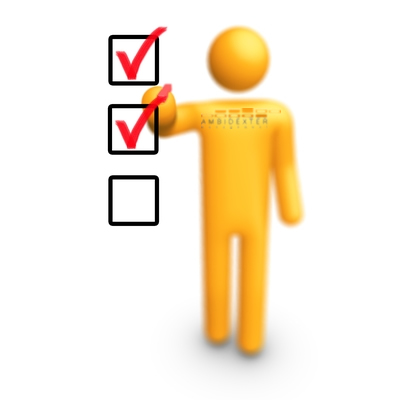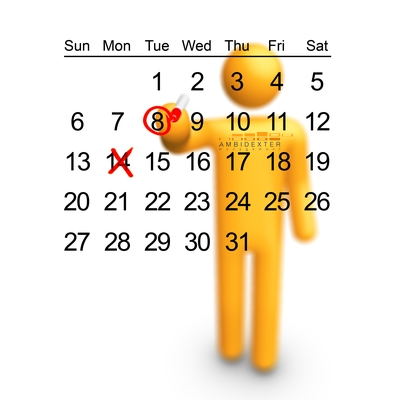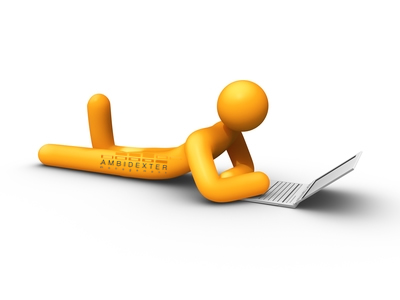Email Etiquette Checklist
Checklist to be used as a reminder of the small details that make your emails effective and professional commuinicatio.
Developing A Survey Checklist
Developing A Survey Checklist
Checklist to be used to develop the format for a survey of your customers or other stakeholders.
Pyzdek, Thomas & Keller, Paul A. "The Six Sigma Handbook" 3rd Edition. McGraw Hill (2010), p. 50-51.
Writing Elements of Style Checklist
Writing Elements of Style Checklist
Checklist to be used to write with style and structure.
William Strunk, Jr. "The Elements of Style (Revised)". The Elements of Style Press (2011).
See also Document Editing Checklist
Writing An Executive Summary Checklist
Writing An Executive Summary Checklist
Checklist to be used to write an effective Executive Summary for a project or other business document.
- Mark all that apply.
- Does your Executive Summary need to bring together several business documents? For example on a project, your Business Case and Project Brief?
- What is the goal of writing this Executive Summary? Is it simply to summarize work activity that has taken place for your specific audience? Or is there a strategic goal with the act of summarizing, such as influencing an executive decision or course of action?
- Is the audience internal to your company, external (e.g. clients, shareholders), or both?
- Is the content appropriate for your target audience?
- Is the style of writing appropriate for your target audience (e.g. word choice, tone)?
- Does the Executive Summary begin with a description of a business problem from your business document?
- Does the Executive Summary include analysis from your business document?
- Does the Executive Summary include the conclusion(s) or outcomes from your business document?
- Does the flow of content of the Executive Summary mirror that of your business document?
- Have you included a high impact visual or chart that supports the main argument of your business document?
- Is your Executive Summary short enough that it can be read quickly and result in a solid understanding of your business document? Suggested length for an Executive Summary is one to three pages or five percent the length of the business document you are summarizing.
- Should your Executive Summary be included in the front of your business document or should it stand alone?
7 "C"s of Communication Checklist
Topics: Communication | Checklist
7 "C"s of Communication Checklist
Checklist to be used as a general guideline when communicating a (formal) message in any medium (written, spoken, or otherwise...)
More Articles...
Subcategories
-
(Book) reviews
(Book) Reviews: Worth reading? Absolutely!
 Reading keeps the mind agile. We read a lot; Books, articles, blogs to name a few. Here is a list of what we liked and did not (sometimes)
Reading keeps the mind agile. We read a lot; Books, articles, blogs to name a few. Here is a list of what we liked and did not (sometimes) -
Checklists
Checklists: To make sure you don't forget anything...
 Here you will find an ever growing number of checklists. Every third checklist we publish is available for the general public.
Here you will find an ever growing number of checklists. Every third checklist we publish is available for the general public.-
Strategy Checklists
All Strategy related checklist can be found here.
-
Communication
All communication related checklists...
-
Project Management
All PM related checklists...
-
Operations
All Operations related checklists...
-
Strategy Checklists
-
Lessons Learned
Lessons Learned Do not make a mistake more then once!
 Here are some of the insights we have acquired over the last two decades.Remember though that Lessons Learned are only really learned if you act upon them!
Here are some of the insights we have acquired over the last two decades.Remember though that Lessons Learned are only really learned if you act upon them!-
Project Management
Don't make mistakes more than once!
-
Project Management
-
Templates
Templates Don't invent the wheel. It has been done.
 If you know what you are doing a template can be a very valuable instrument. Here you will find a vast selection of templates. Every third template will be made available to the general public.
If you know what you are doing a template can be a very valuable instrument. Here you will find a vast selection of templates. Every third template will be made available to the general public.-
Project Management Templates
All Project Management related templates...
-
Strategy Templates
All Strategy related templates...
-
Project Management Templates
-
Events
Events Where things happen.
 Here you can browse events that may interest you. If you like to promote an event that is not yet listed you can do that as well.
Here you can browse events that may interest you. If you like to promote an event that is not yet listed you can do that as well. -
Tooling
TOOLS To make things happen.
 Here you can find an overview of all sorts of tools that may be of use.
Here you can find an overview of all sorts of tools that may be of use.But remember: A fool with a fool is still a fool! Worse... a dangerous fool!
-
Project Management Tools
All tools directly related to Project Management. Please note that there is a separate section on estimating tools.
-
Project Management Tools
-
Tutorials
TUTORIALS To see how we do it.
 Last but certainly not least here you can find all sorts of tutorials on how to use some of the tools/instruments we use. Go try. And if you are still stuck you can always contact us or seek help in one of the forums
Last but certainly not least here you can find all sorts of tutorials on how to use some of the tools/instruments we use. Go try. And if you are still stuck you can always contact us or seek help in one of the forums -
Stuff
We have lots of stuff. We like lots of stuff.
-
Cool Stuff
There is so much cool stuff out there!
 Here we’ve collected for you, a selection of things, sites, ideas and otherwise, that we think are very cool.
Here we’ve collected for you, a selection of things, sites, ideas and otherwise, that we think are very cool.
-
Cool Stuff


